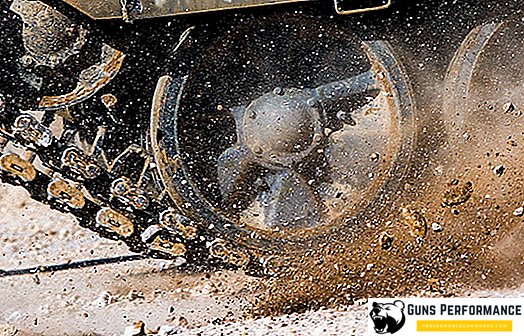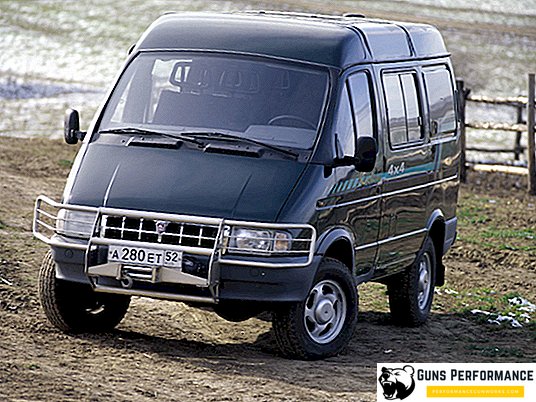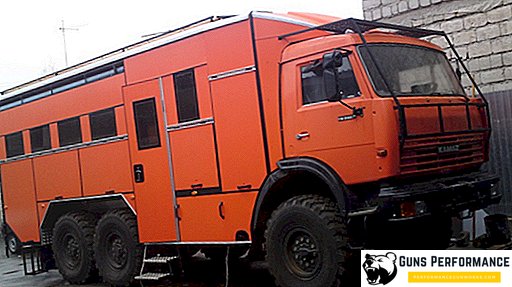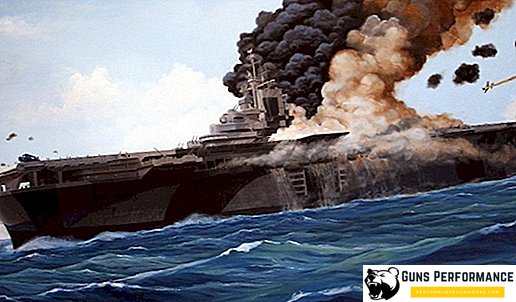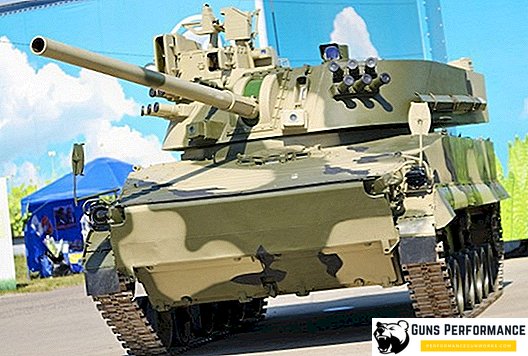In the thirties of the last century, a new type of troops was born - parachute parachutes, which first appeared in the USSR. They were also in Germany, in which parachute systems had an extremely unsuccessful attachment of lines. The only advantage was the ability to parachute at extremely low altitudes up to a hundred meter height. By the way, during the period of the famous Cypriot operation, the landing was made from seventy-five meters.

Without going into details, we can say that there were quite a few shortcomings in the German parachutes. This led to massive injury and even to tragic incidents for the parachutists themselves. Not rare were cases of entanglement in parachute lines. It was at that time that the decision was made to arm parachutists with compact cutters for quick release from tangled slings.
Thus, by special order, German engineers developed special line-cutter knives, which entered service with parachute units of fascist Germany in May 1937. Knives received the name "Fliegerkappmesser - FKM" (flight knives, cutters), or "Kappmmesser" (knives, rope cutters).
In the West, these knives became known as the "Luftwaffe Fallschirmjäger-Messer" (Luftwaffe parachute knives), and one of the names began to sound like "German gravity knife", which in German means German gravity knife.
Structural features of the cutter
Externally, the gravitational knife is a folding design, in which the blade in the folded state is hidden in the handle. The blade opens with the force of gravity (hence the name “gravitational”) or with a simple wave of the hand, which allows using it even with one hand. It is this property that made the knife as useful as possible in conditions of mortal danger.
German gunsmiths successfully coped with the task and created an excellent knife in simplicity, compactness and reliability. He was destined not only to go through the purgatory of the Second World War, but also to be the most famous army knife of the time. Moreover, it is still in service with individual NATO states, including Germany.
To date, five different modifications of these knives are common knowledge. And two of them were made in the days of Hitler's Germany, and the other three - after the war.

The first modification of the gravitational knife
The first models of cutters "M-1937", or Type I Fkm, were produced in the 1937-1941-ies. The length of the knives was 25.5 cm, and when folded, it was 15.5 cm. The blades had the classic shape of penknives, and the point had a drop-like shape, made of stainless steel with a length of 10.5-10.7 cm with a butt thickness 4.0-4.2 mm. To prevent corrosion, all metal elements were nickel-plated. The grip plates were oak, walnut or beech and were attached with copper rivets.
Knives had nonseparable designs. In addition to the blades in them were folding pile - an awl with a length of just over nine centimeters to unravel the knots. In addition, this awl could be used in the form of a probe for mine clearance. The handles of the knives had arms for tying the cords.
The cutters were worn in special pockets of parachute pants, which were fastened with buttons. In order to conveniently remove the knives from their pockets and to prevent their loss, there were cords that were fixed at one end on the arms of the arms and the other on the jackets of the paratroopers.
The operation of knives of the first modification revealed their essential shortcomings - the non-separable structures did not allow cleaning the knives in the field. These defects were eliminated in the subsequent modification - "M-1937 / II", which was produced from 1941 until the end of the war.

The second modification of the gravitational knife
The main distinctive feature of the second modification was the likelihood of the knives being quickly disassembled into its component parts for cleaning or changing damaged blades with new ones, without additional tools. The guards and locking levers were no longer nickel-plated, but oxidized and became dark colors. Gravity knives now armed not only paratroopers, but also pilots and tankers.
When the British seized samples of German knives-cutters, they decided to produce the same knives themselves to arm their special forces. One of the British enterprises manufactured five hundred units of gravity knives.
These knives are almost exact replicas of the German knife-cutters. As a result, the total number of British gravitational forces produced during the war years was approximately three thousand two hundred units. Some military experts claimed that with all the knives left after the war they acted unpredictably. They were all gathered in one place and flooded somewhere in the depths of the North Sea.
The first post-war models of cutters were released in 1955. This happened a year after the revival of the Airborne Forces as part of the West German armed forces. Knives were made by a company that made cutlery. They had nonseparable structures, and the lack of welds made the handles of knives thinner in comparison with knives of previous modifications.

Blades, their mouths and clutch levers against corrosion had a nickel-plated coating. The black overlays on the handles were plastic and grooved with three parallel strips for greater reliability of holding them in the hand. The mouths of the arms were closed from contamination by folding plugs.



